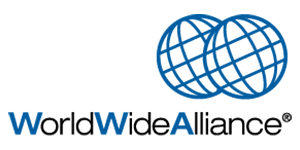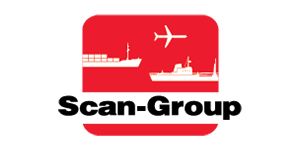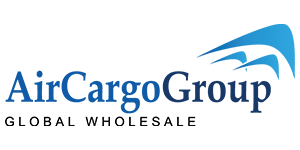Acquisitions can have an enormous impact on growth. The outcomes of an acquisition will differ dependent on how well the deal is executed. The most successful buyers use a consistent set of steps to guide them through the M&A process.
The initial step of M&A is to determine the motive behind the acquisition. This will give you a framework for all future decisions and actions. Buyers with clear motivations can avoid common pitfalls associated with acquisitions like having multiple targets in mind, trying to close on a deal without having completed due diligence, and spending too much for a business that’s culture and strategy are not a good fit.
After you have identified your purpose, the next thing to do is to create specific guidelines for identifying potential companies to target. This will include factors such as industry focus geographic location, financial health, and intellectual property factors. The best M&A teams make use of a variety of sources to identify potential candidates, ranging from databases to online portals, and then refine their list to “A” and “C” deals.
After a long and often difficult due diligence process the final step is to create a narrative for the company. This is the story look these up you will tell to clients suppliers, customers, and competitors. It’s crucial that it’s positive. It’s important to also consider the impact that an acquisition will make on your P&L and balance sheet.
The board room is www.findboardroom.com/what-is-board-portal-software/ the center of strategic decision making it is a place where discussion and collaboration can will propel businesses to success. Meetings today can be spread across geographic locations and platforms, which necessitate an appropriately-equipped room that can support efficient in-person and digital communications. In this article, you will discover the essential characteristics of a modern boardroom that will ensure the highest level of collaboration and productive discussions.
The classic style of the boardroom that features a huge central table and chairs surrounding it, promotes direct communication between participants and encourages equality. This is the kind of layout you’ve likely seen in movies and sitcoms. It’s ideal for formal discussions that require authoritative voices and clear interaction. This layout is ideal for meetings that involve remote participation because participants can easily engage in virtual discussion while keeping each other updated about any developments.
Another variation to the classic boardroom style is the hollow square layout for meetings. This design is similar to classroom arrangements but without the rows and tables that divide participants. This is ideal for groups of 10-20 persons as it allows the facilitator to move between four tables for discussion or to present a idea.
Another great alternative is the U-shaped meeting room design, which is able to accommodate up to 25 people. This design is similar to the boardroom style however it has a separate desk in the middle of the U shape that can act as an open podium for speakers. This layout is perfect for meetings that revolve around presentations and workshops. It offers plenty of space for attendees and speakers to get together.
Effective Board Meetings: How to Conduct Effective efficient meetings
Your company depends on the board members to relay important information to internal teams and ensure that everyone is focused on achieving their general goals. If your board meetings fail to deliver or ineffective, it could cause a decline in productivity and a lack of communication between management and the team.
To create effective meetings it is important to know the role each member plays and the different discussion styles that exist within your board. Certain members tend to be more vocal and speak first, whereas others think before they speak. The board chair or executive director CEO should be spending time outside of the boardroom to know each individual member’s preferences, interests, and preferences in order to encourage engagement.
In the opening session of your board meetings, begin by making sure that quorum present (a minimum number of members needed to legally conduct business). The chair should then outline the highlights of the board package and the pre-meeting conference, and set expectations for rest of the meeting.
The bulk of the board’s meetings will be spent discussing strategies to encourage progress and how to overcome any roadblocks. The board can utilize this time to share new perspectives and encourage new ideas. It’s also a good idea to include a dedicated portion of the agenda for compliance and legal topics so that your board is in compliance to the law, regulations and ethical standards.
her explanation buildingbettertrustboards.org/govenda-boardroom-review/
A successful board meeting relies on a well-crafted agenda. A well-organized agenda for board meetings includes all the important items that must be discussed during the meeting, along with an estimate of time for each item to ensure that the board can stick to its agenda and not exceed it.
In addition, to the outlined items your agenda for board meetings should also include any other documents that will be relevant to the discussion (such as reports from the board or https://www.boardroomadventures.com/how-to-plan-a-board-meeting-agenda/ presentations). It is also a good idea to distribute these documents at least one week before the meeting date. This will allow everyone to review the material prior to the meeting and be prepared for discussions on the agenda.
Additionally, it is essential to clearly define the next steps following the board discusses each item. This will ensure that everyone understands who is responsible for each item and helps to ensure that the responsibilities of everyone on the board.
It’s common for a board meeting to drift off topic or go over the amount of time allotted for each topic. While it’s okay to do it occasionally, if it occurs frequently the board could be ignoring important topics or wasting too much time discussing non-essential issues.
Be sure your agenda has a clear flow and provides the space for announcements of special events, congratulations, recognition, and reminders. Also, don’t be afraid to think outside the box! You can incorporate some color or your organization’s logo. This will make your board’s agenda more visually appealing and easier for board members to navigate.
Data security and smart investments are a perfect match to ensure safety for business and establish trust between the business and its customers. Although it can be tempting to reduce cybersecurity spending during times of economic uncertainty, a pound of prevention is definitely worth a pound of cure – and it is much more cost-effective to invest in the prevention of incidents than for cleanup and recovery.
Investment banks usually have sophisticated security systems in place, such as firewalls and anti-virus software. However, it is crucial to keep in mind that a successful strategy for cybersecurity requires more than three different types of private equity investment strategies these tools. It also includes the best practices for granting access to sensitive information only on a”need-to-know” basis and encrypting the information with authentication. It’s also crucial that financial institutions comprehend the importance of investing in the human firewall, as nearly 90% of security breaches are caused by employee error.
In addition to avoiding potential cyberattacks investment banks can enhance their security measures by implementing technology like blockchain. This technology improves security by encrypting the data while it is in transit and at rest, rendering it unreadable to unauthorized users. Additionally, it permits companies to monitor and secure their assets, helping them avoid data loss and other serious consequences.
Many financial institutions are still struggling with the risk that sensitive information on investors or customers could be lost. Employees are at risk of losing sensitive data when they use their work-related devices out of the office, attend meetings outside of the office or work from home. Investment banks can implement their data protection policy regardless of whether the device is connected to a corporate network or public WiFi, or home WiFi, or connected at all.
The right virtual data room provider can significantly impact M&A transactions and other important business processes that require secure, efficient document sharing. If you’re an investment banker facilitating IPOs or capital raising deals, or a property firm that deals with land and real estate transactions, it is essential to locate a virtual data room that meets your specific requirements for your business. Virtual data rooms have various pricing structures and features, therefore it is important to carefully consider them prior to choosing one.
The majority of investment bankers believe that VDRs all have the same features and cost structures. In reality, they are very different. It can be difficult to pick the right one. You’ll need to determine your business’s needs and then choose the VDR with the features that supports those needs.
It is possible to begin by evaluating VDRs on software review sites like TrustRadius or G2 Crowd. These reviews are written from the perspective of users, and will give you an idea of how the vendor’s performance. It’s also a good idea to talk to several vendors and request a demonstration of their product to better understand the capabilities they have to offer.
It is essential to select the right virtual dataroom service provider that is easily customizable to your specific business. It should be easy to use, have a low learning curve, and offer 24/7 customer support. Also, make sure the VDR you select is compatible with all other software and operating systems.
http://www.respigotech.it/what-are-minutes-of-a-board-meeting/
If a business decides to embark on a major step, such as a capital raise or an M&A deal, it may require a review of the tens of thousands of confidential documents. This information is highly sensitive and may be misused if it falls into the wrong hands. Due diligence procedures can be made easier by using software for data rooms, which allows only authorized people to view the information.
When you are comparing VDR software, make sure you choose rooms which allow you to create customized reports, and track uploads and user activity. This gives valuable insight into the data and makes it easy to manage projects. Take note of the variety of languages in which data rooms are available, as this will attract many different expertise.
Another thing to consider is a tool for redaction that allows users to effectively block out information. This is an essential aspect of M&A deals because even a single instance of sensitive information not being logged could have a significant impact on the result of the deal.
The best data room will have a wide range of features to meet the demands of M&A transactions. The most crucial features are secure file storage and sharing, a robust digital right management system and a search function which can find complete or partial matches. The best virtual data rooms will also have an option to drag and drop that is simple to use, and will support multiple file formats. They will also include an event scheduler and also support mobile devices.
Business software that is top-of-the-line will help a business to become more competitive in various areas, including communication, organization and workflow. They also allow the company to stay more connected with employees and customers in different locations.
This kind of software is usually employed by businesses of all sizes, from young startups to large corporations. They are designed to simplify numerous business processes, including project management, accounting and finance as well as customer service and resource management.
AI and machine-learning enhancements are among the most exciting additions to business software. They offer predictive analytics, automated routine tasks, and more customized experiences. Additionally, real-time collaborative tools have become a crucial requirement for modern business software. These tools allow teams to instantly communicate and share files in real time regardless of geographical location. The use of voice-activated controls is a innovative feature that gives hands-free access to an extensive range of functions.
For smaller companies, efficient workflow software and communication tools are vital for running smoothly. These software tools help secure data solutions for critical M&A phases improve efficiency and organization by automatising routine tasks that would otherwise require hours of manual work. They also let employees concentrate on more important and valuable projects for the company. Smaller companies need to communicate effectively and efficiently, especially when dealing with customers. Slack is rated 4.6 on Capterra and 4.5 on G2, is a great example of the best communication software. This software can bring teamwork up to a new level.
Board documents are an essential source of information that guides the key decisions that keep a business on track. Insufficient information can overwhelm an individual on the board and result in poor decision-making, while too little means the board is missing important insights or risks losing control of the business. To avoid this, board members need access to thorough and accurate information that is easily digestible and well-organized. This article provides best practices for creating effective documents for board members that meet these requirements.
Effective board papers include the most up-to-date and relevant information that is directly related to the strategic decision to be made. They are concise and clear, employing formal business writing styles and refraining from technical terms. Boards comprise diverse backgrounds, and therefore information should be tailored to each directors needs. Marketing jargon, as an example is not appropriate for finance professionals. If you’re creating documents for boards, make sure you include a glossary for any particular terms or acronyms. This will ensure that everyone can understand the document.
Additionally, the board should establish its own internal guidelines and standards for the preparation of documents for the board. This includes using a template, choosing the preferred fonts and creating an appendix to share resources or provide additional details. The board should also set rules for a quorum and the number of members required for a meeting to be held, making sure that all directors participate and be heard.
Boards should distribute the documents for board meetings early enough to allow enough time for directors to go through them before the meeting. A week is typically an ideal timeframe to ensure directors have ample opportunity to read the documents and prepare for the meeting.
The M&A landscape in the Netherlands is rapidly changing. The article reviews the essential decisions a buyer has to take, including making the decision to purchase assets or shares of the target firm, and how to finance an acquisition.
Private M&A transactions are largely not governed by law but parties may agree upon their own legal structure in the contract of sale (the BV or the NV). However the Dutch Civil Code (DCC) offers a set of standard terms for the purchase of assets, shares, or business and specifies the formalities that are required to be fulfilled when there is a public transaction involved.
An M&A public transaction might need to be approved by the Authority for Consumers and Markets (ACMM) or the European Commission. In addition the Work Councils Act (Wet op the Ondernemingsraden) and competition regulations may be applicable to certain types transactions.
Shares and the business of a target company may be acquired in a number of ways, including by offering new shares as a reward for the deal. In the Netherlands the Netherlands, a merger of shares like this is exempted from capital contribution tax. However dividend withholding tax (WHT) is typically due on the dividends distributed by the company that acquired it.
The Netherlands permits the depreciation of goodwill to be used for accounting purposes when a business or asset is acquired. This can be carried out over a period of ten years, unless it is classified as a group relief for CIT (clawbacks could apply). Service organizations, including branch offices that are located in other countries are subject to transfer pricing regulations, and may be eligible for advance certainty on the tax consequences of proposed related-party transactions by way of the provision of international rulings.



